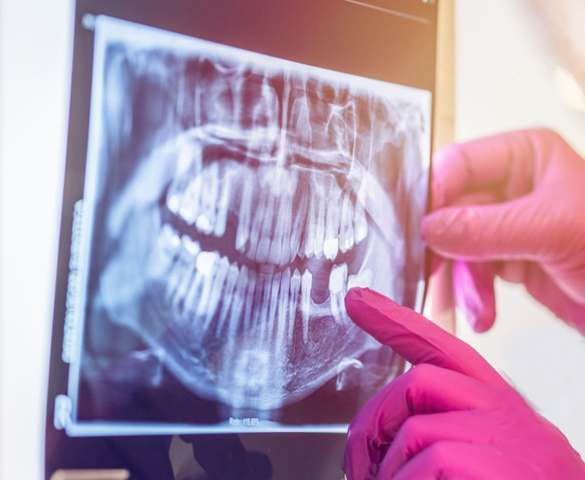1084 Main Street Holden, MA 01520
Digital X-Rays

Digital X-Rays for Enhanced Diagnosis
Digital radiography (digital X-rays) uses an electronic sensor to capture and store dental images on a computer, offering instant viewing and easy enlargement. This technology reduces radiation exposure by 80-90% compared to traditional X-rays.
Dental X-rays are essential diagnostic tools that reveal hidden issues not visible during a routine exam. They help dentists accurately detect problems and create a tailored treatment plan, preventing undetected issues from worsening.
What Dental X-Rays May Reveal
- Abscesses and cysts
- Bone loss
- Tumors (cancerous and non-cancerous)
- Decay between teeth
- Developmental issues
- Misaligned teeth and roots
- Problems beneath the gum line or inside the tooth
Are dental X-rays safe?
We are naturally exposed to some level of radiation in our environment, but digital X-rays emit significantly less radiation than traditional dental X-rays. Not only are they safer for patients, but digital X-rays are faster and more comfortable to take, reducing your time in the dental office. Additionally, since the images are captured electronically, there is no need for developing X-rays, which eliminates harmful waste and chemicals from being disposed of into the environment.
While digital X-rays are considered very safe and produce low radiation, dentists still take precautions to limit exposure. These precautions include only taking necessary X-rays and using lead aprons to protect the body.
How often should dental X-rays be taken?
The need for dental X-rays is tailored to each patient’s unique oral health needs. Your dentist and hygienist will determine the appropriate X-rays based on your medical and dental history, a thorough exam, symptoms, age, and risk factors for disease.
For new patients, a full mouth series of X-rays is typically recommended, which is valid for three to five years. Bite-wing X-rays, which capture the top and bottom teeth biting together, are taken during routine check-ups and are usually advised once or twice a year to detect any new dental issues.